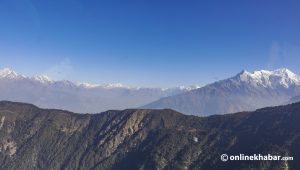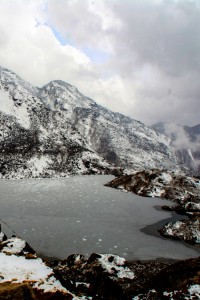Every year, on the full moon in August, Hindu and Buddhist pilgrims make the difficult trek to Gosaikunda Lake, a high altitude lake in Nepal’s Himalayas
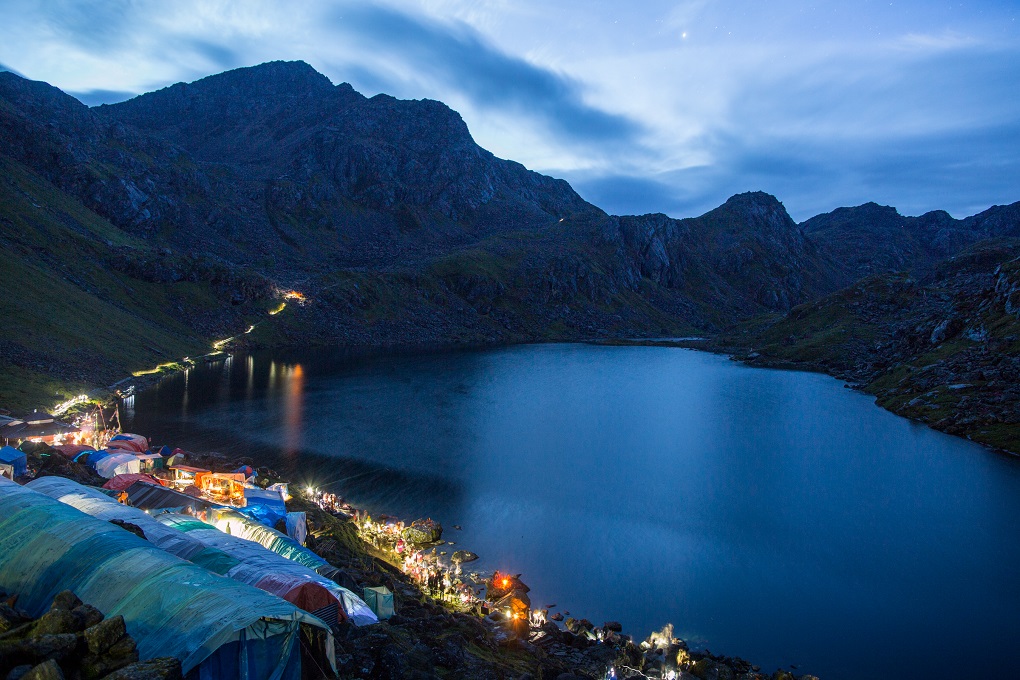
For centuries water has been intimately intertwined with culture, and this is strikingly evident in the Himalayas. Himalayan water is considered sacred for its purity, and it sustains the lives of hundreds of millions that live along the banks of the rivers that flow from the mountains.
One of the sources of such water is Gosaikunda Lake in Nepal’s Rasuwa, situated at an altitude of 4,380 metres above sea level. The water from the lake feeds one of the major rivers in the Gandaki river basin, and is considered sacred to both Hindus and Buddhists. According to Hindu lore the god Shiva created Gosaikunda Lake. He thrust his trident into the mountain to draw water to cool his throat after swallowing poison found in the ocean during the war of gods and demons.
The lake is also a famous destination for trekkers in Nepal, and is one of the high altitude Ramsar wetland sites. It is within the Langtang National Park.
Every year on the August full moon during the Janai Purnima Festival, thousands of Hindu and Buddhist pilgrims flock to Gosaikunda Lake in the quest for the holy water. On the day of the full moon, pilgrims take a bath in the lake to purify their body and soul. They also collect the water from the source of Gosaikunda Lake in their water bottles to take back home. The collected holy water is symbolically used in different cultural and religious activities back home throughout the year in Nepal.
It takes two to three days of trekking from Dhunche, the headquarters of Rasuwa district, to Gosaikunda Lake. Pilgrims of all ages trek up the mountain. Although the high-altitude trek is difficult, the religious and cultural value of the holy water gives the pilgrims incentive to tackle the route.
Then they bathe from morning to evening in the freezing cold water, worship the water and meditate in front of the lake.


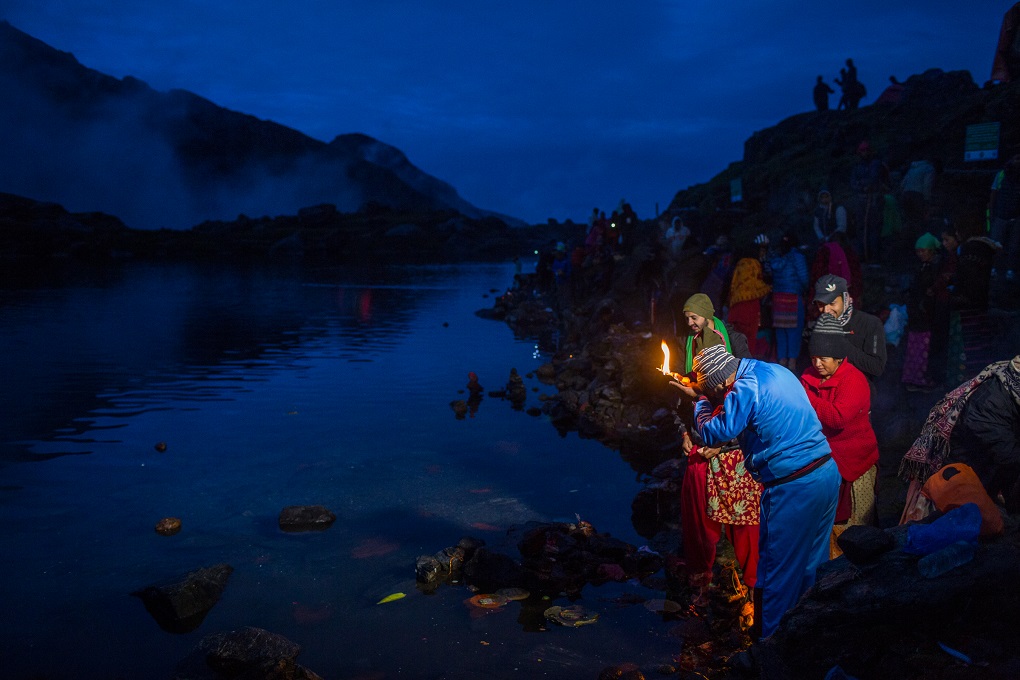



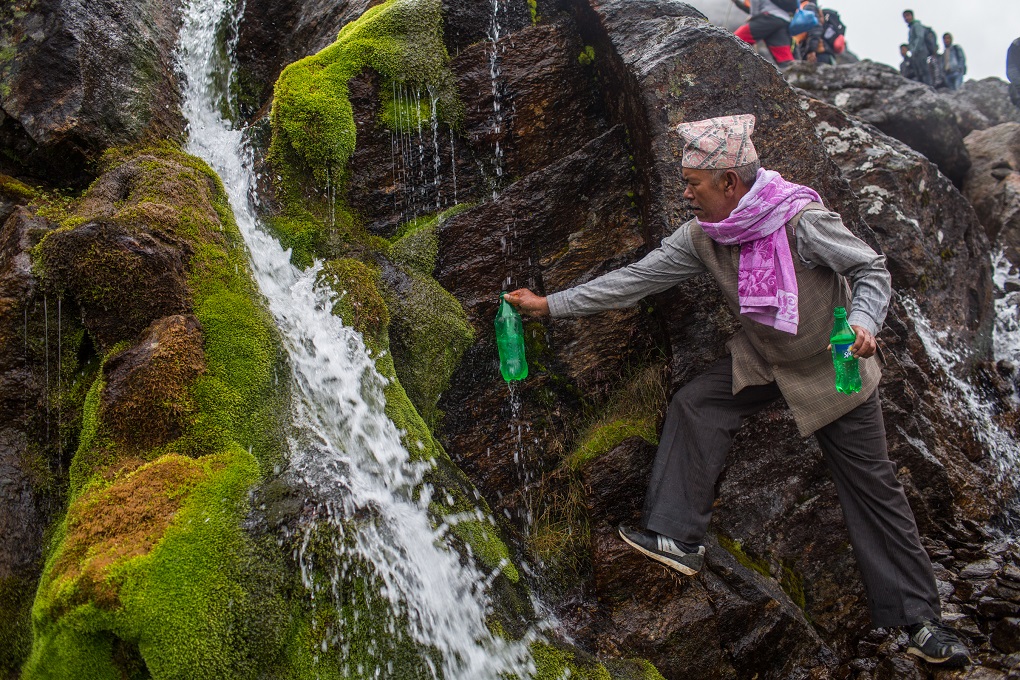


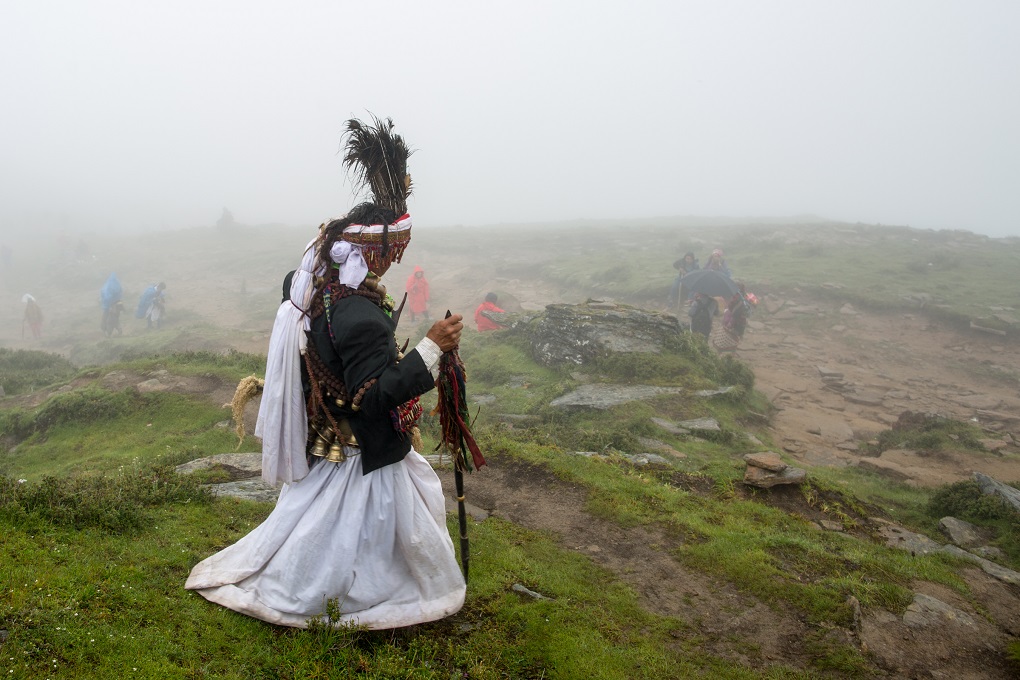
This story was originally published on The Third Pole. Read the original story.




